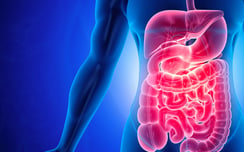The Advantages of Non-Remitting Chronic IBD Rodent Models
As the frequency of inflammatory bowel disease (IBD) increases globally, preclinical researchers continue to study new treatments that can address chronic inflammation of the gastrointestinal tract and help people living with Crohn's disease or ulcerative colitis.
To better understand how IBD research is supported in the preclinical phase, continue reading and discover insight our team has gained from running IBD studies for the last 20 years.
Understanding the Differences Between IBD Animal Models
Choosing an IBD model depends on the research needs and the target mechanism of action. In some models, IBD can be induced by administering an antibody or a chemical that causes an inflammatory response. However, once these agents are no longer administered, the models will return to a normal state. This may not be relevant from a clinical standpoint as the human disease is typically non-remitting and chronic in nature. Thus, chronic IBD models tend to more accurately recapitulate the human condition compared to chemically-induced models. In addition, positive controls can also be used given that antibodies, such as anti-IL-12p40, work well in chronic IBD models.
Over the last 20 years, Inotiv has worked with several IBD models. We have seen how non-remitting chronic models produce more robust and consistent effects compared to Dextran Sulfate-Induced (DSS) Ulcerative Colitis and 2,4,6-Trinitrobenzenesulfonic acid (TNBS)-Induced Ulcerative Colitis models.
Promoting IBD Research with Clinically Relevant Models
Three non-remitting chronic IBD models at Inotiv are considered most clinically relevant and logistically consistent to run. These include:
• Adoptive T-Cell Transfer Colitis
• Mdr1a KO Spontaneous Ulcerative Colitis
• Il10 KO Spontaneous Colitis
As a highly published model, the Adoptive T-Cell Transfer Colitis model provides pathology data, such as inflammation and hyperplasia. At Inotiv, there is very little ulceration observed due to the way we develop the model. As a T-cell driven model, it can support research of T-cell therapies and any subsequent cytokine response. Studies that involve biologics, small molecules, and JAK inhibitors are well suited for these models.
Both the Mdr1a KO Spontaneous Ulcerative Colitis model and Il10 KO model were mostly supported by niche academic work. We have supported and validated these models for the last eight years and have seen an increase in their demand in non-academic research.
Mdr1a KO models are susceptible to developing severe, spontaneous intestinal inflammation when maintained under pathogen free animal facility conditions. These models can support a permeability assay as they are more susceptible to barrier changes. They may provide new insight into the pathogenesis of IBD, the nature of a dysregulated immune system, and the potential to screen therapeutic compounds in a chronic IBD setting — without chemical or immunomodulatory induction.
Il10 KO Spontaneous Colitis mice do not produce interleukin 10 (IL-10). IL-10 is anti-inflammatory in the colon; therefore, disease is localized to the colon. The disease is driven by the adaptive immune system, with expansion of Th1 and Th17 cells. Regulatory T-cell dysfunction leads to loss of immune tolerance and chronic spontaneous inflammation in the KO mice. If needed, researchers have the option to supplement H. bilis or hepaticus in development.
Supporting Endoscopy Throughout a Study and Measuring Endpoints
In a chronic setting, researchers can choose to add endoscopy to their IBD study as another method for tracking disease progression and treatment efficacy. Endoscopy is a quick procedure that allows for repeated assessment over the course of the study; the data can complement other study data points, such as stool consistency and the presence of blood in the stool. A visual scoring system (0-4) can estimate the loss of vascularity, loss of translucency, presence of contact bleeding, presence of mucosal erosions, as well as ulcerations and gross bleeding.
Beyond comparing the body weight change in the disease control (vehicle) to the normal control (vehicle) and the treatment group, Inotiv also provides the weight of the colon per length and generates a summed colon histopathology score. Other endpoints can be added as needed, such as FACS analysis, cytokine analysis, permeability assays, IHC, slide scanning, pharmacokinetic services and bioanalysis, and quantitative image analysis.
Providing Flexibility to Meet Unique Research Needs
We help meet client requirements with flexibility in the dosing paradigms, whether dosing prophylactically or treating in a therapeutic setting. The dose route of administration and clinical assessments are also flexible to support unique research needs.
From study start and endoscopy to necropsy and histopathology, we encourage collaboration throughout the process. Researchers can speak directly with their Inotiv study director running the model, the principal investigator performing the necropsy, or even the pathologist. By working together, answering questions, and discussing findings, we can help you make key decisions that help guide your IBD research. Watch our on-demand webinar to learn more!
Learn more about the available IBD models at Inotiv.


